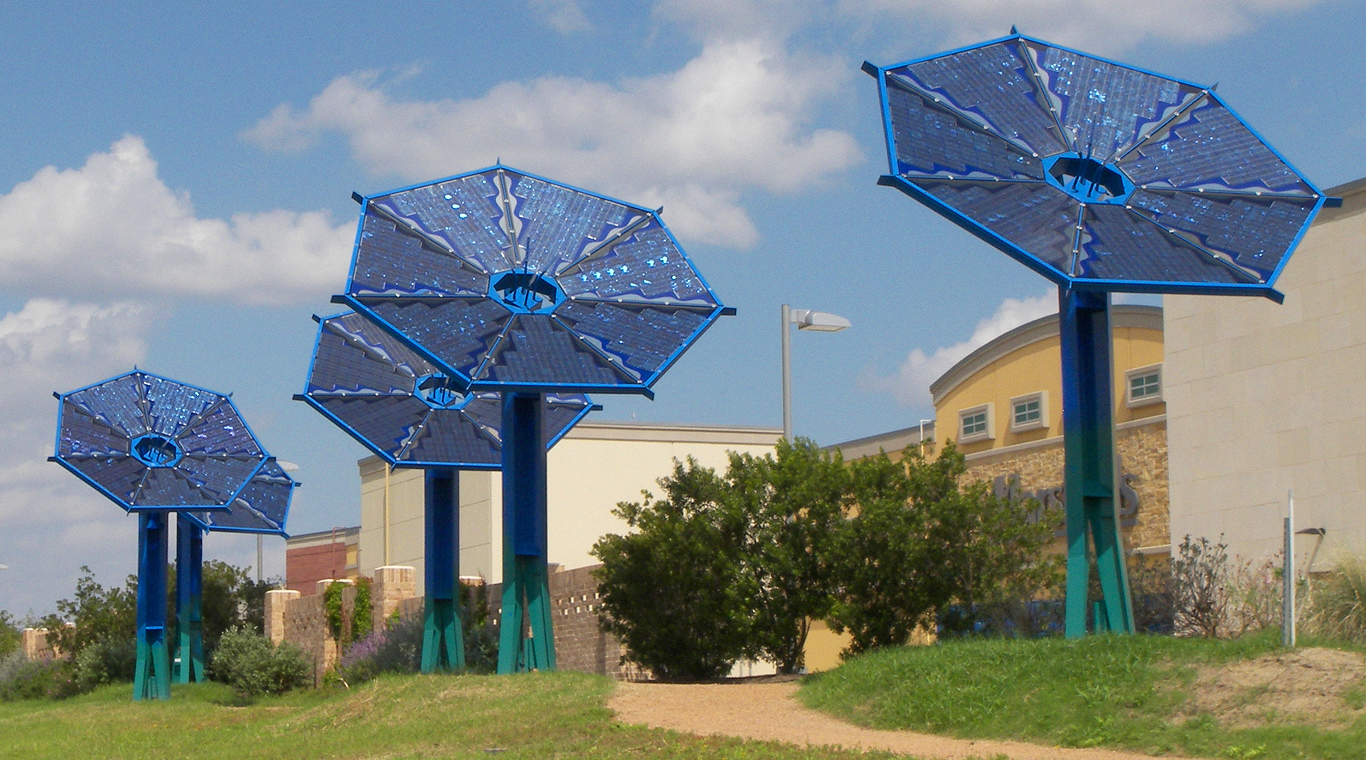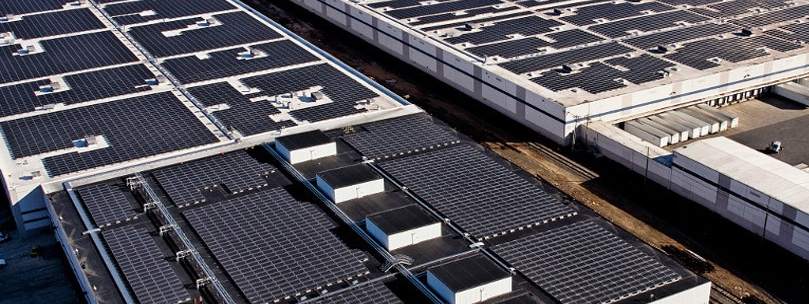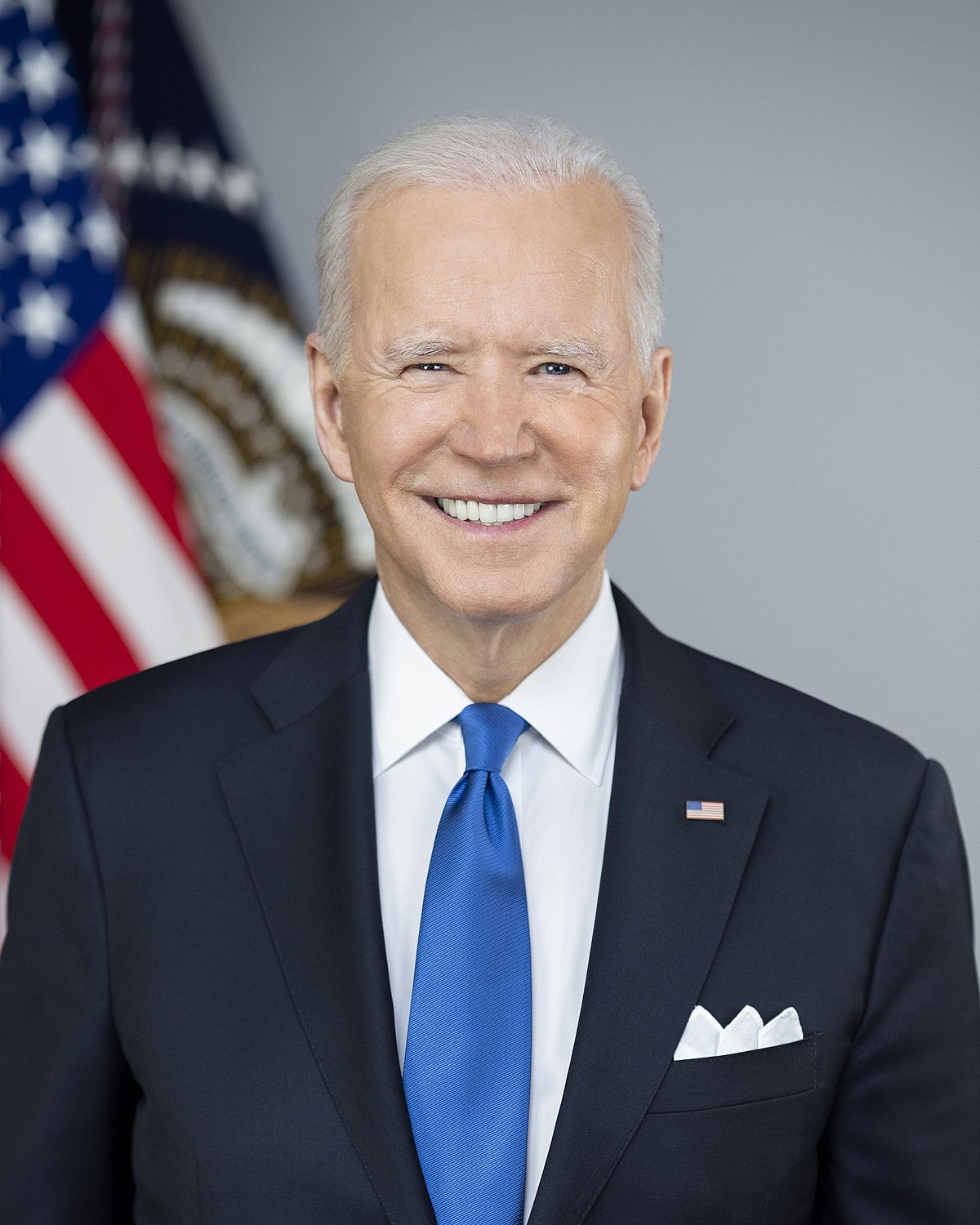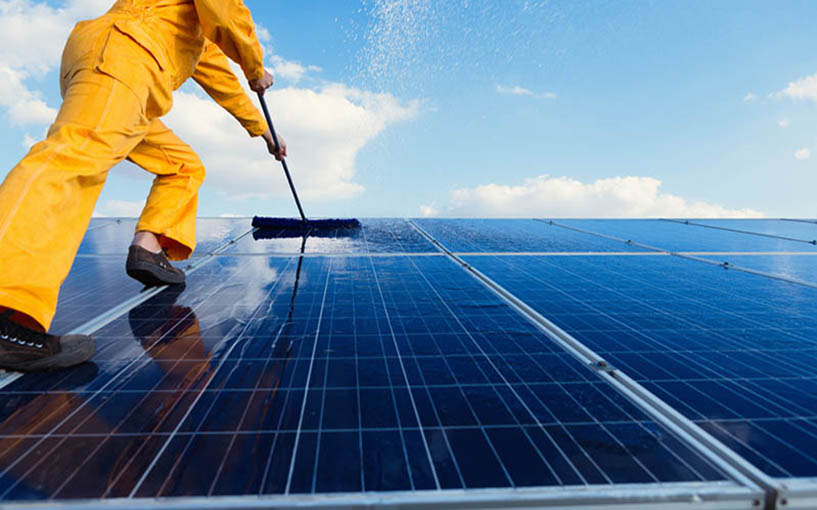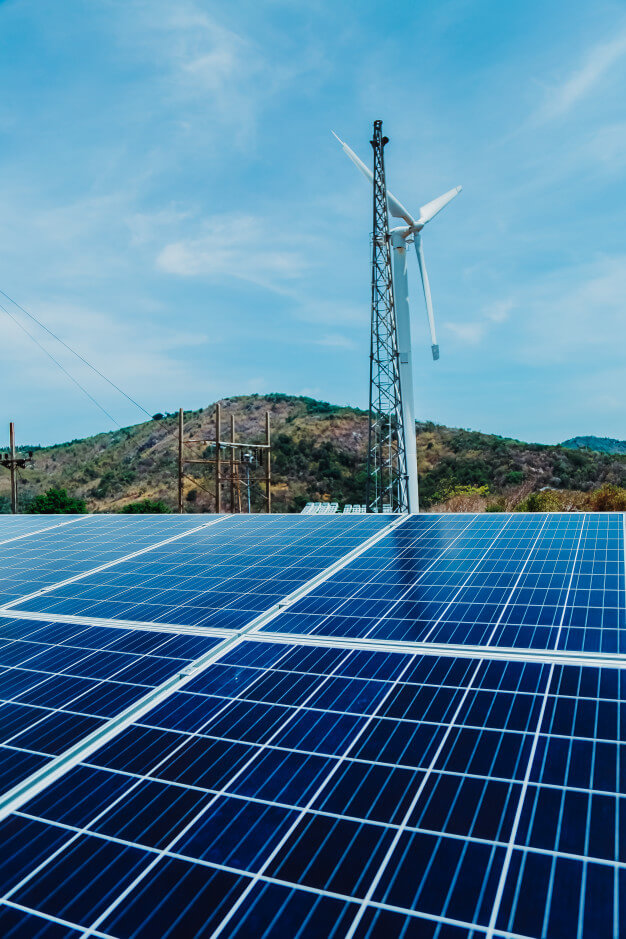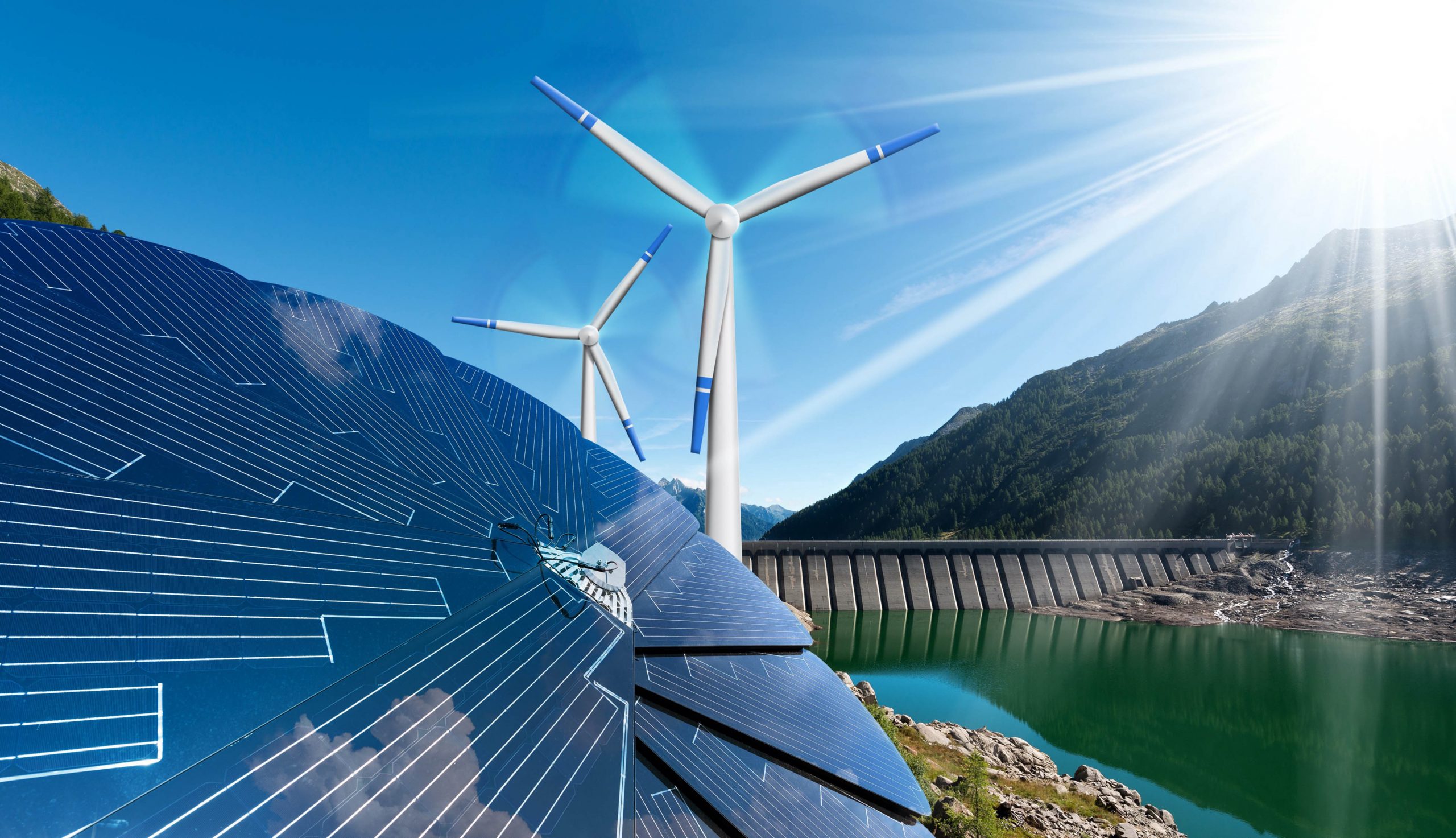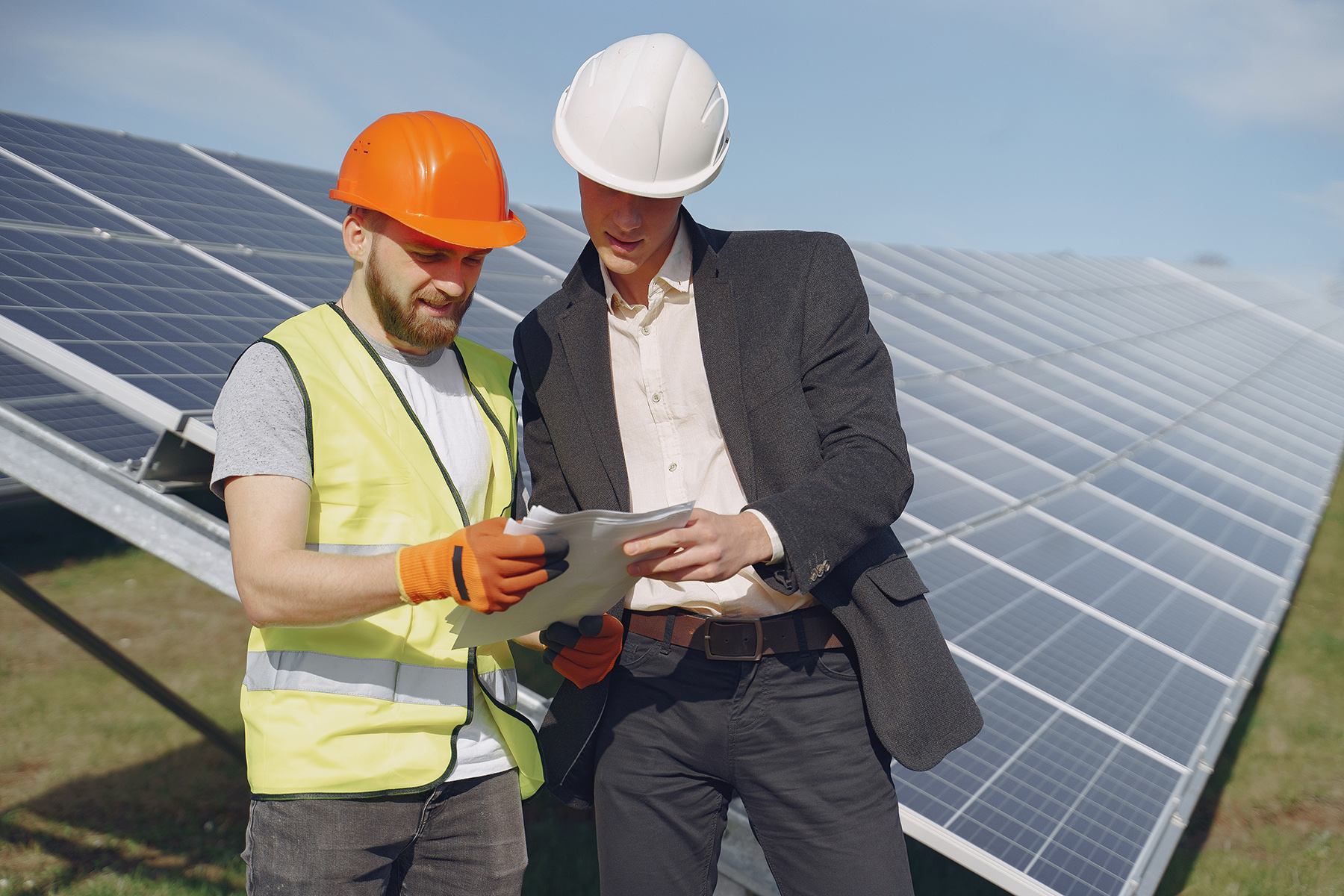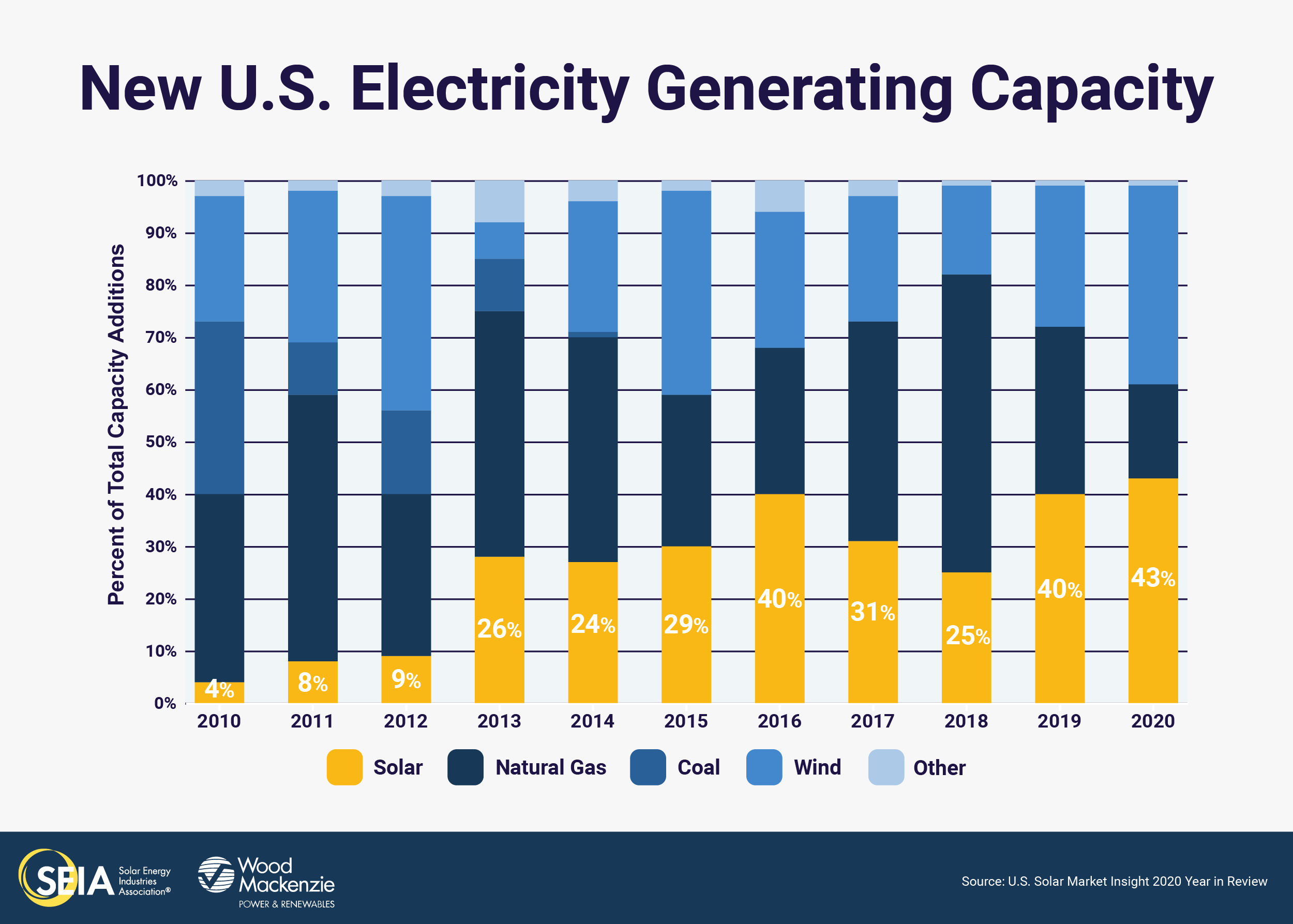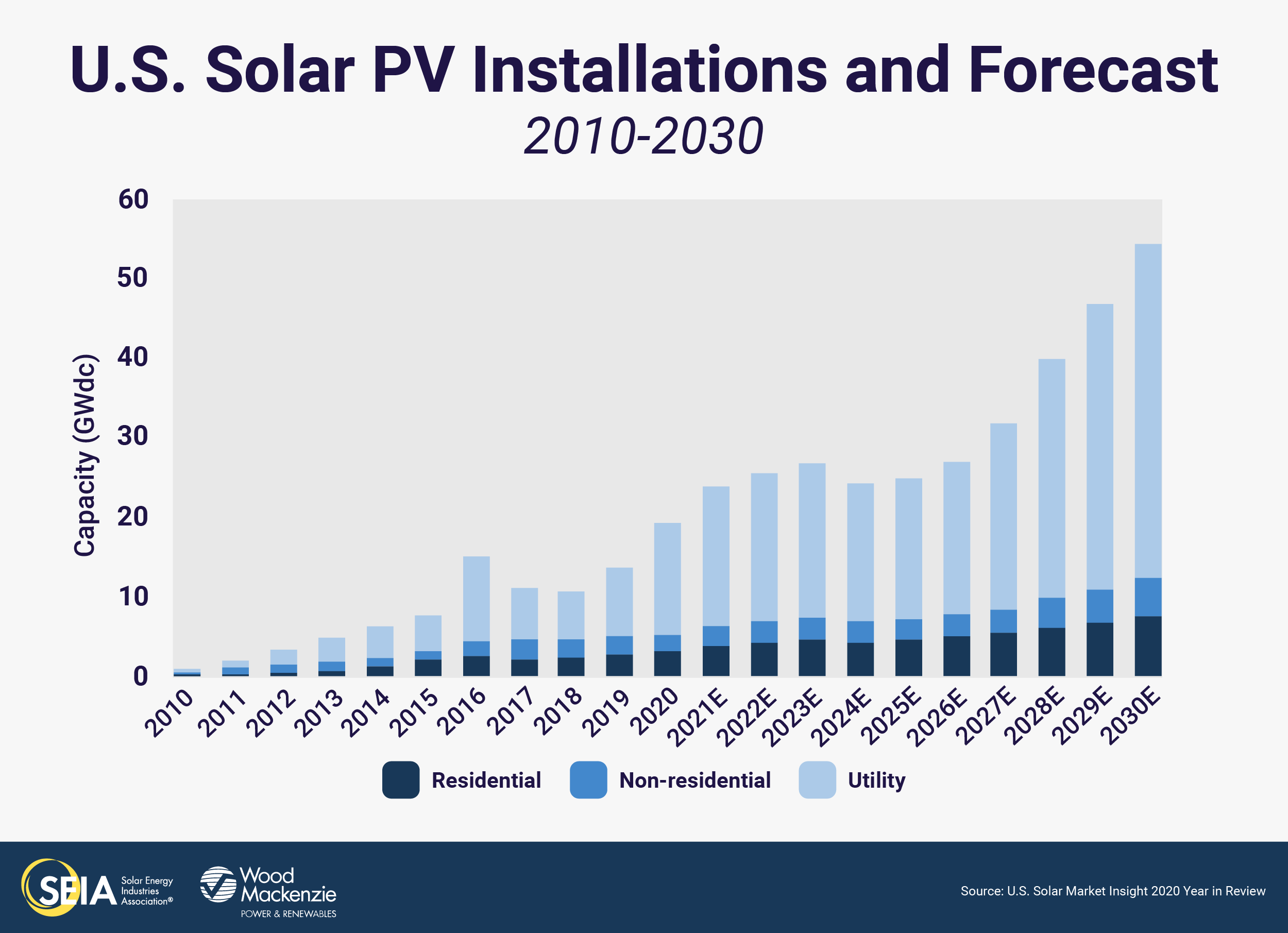How Many U.S. Cities Have Gone 100% Renewable?
1. Abita Springs Abita Springs, LA is committed to transition 100% of the town’s electricity to renewable energy sources by December 31, 2030. Contact LeAnne Pinniger Magee Take Action Take Action Mayor Greg Lemons has pledged their support for a community-wide transition 100% renewable energy.
2. Amherst Amherst, MA is committed to enabling a community-wide transition to 100% clean, renewable energy and is calling on the State of Massachusetts to adopt a statewide goal of 100% renewable energy.
3. Angel Fire Angel Fire is committed to achieving 100% renewable electricity by 2030. Learn More
4. Atlanta Atlanta is committed to achieving 100% renewable electricity by 2035. Contact Marquese AverettLearn More
5. Augusta Augusta, GA is committed to achieving 100% renewable electricity by 2050. Contact Ted Terry
6. Berkeley The City of Berkeley is committed to transitioning to 100% clean, carbon-free energy by 2030, including electricity, transportation and buildings, by 2030. Contact Richard Rollins Mayor Jesse Arreguin has pledged their support for a community-wide transition 100% renewable energy.
7. Blacksburg In December 2017, Blacksburg, VA City Council adopted a goal of transitioning to 100% renewable electricity community-wide by 2050.
8. Boulder In December of 2016, Boulder City Council made the commitment to 100% renewable electricity by 2030! Contact Leslie Glustrom Take Action Take Action Mayor Suzanne Jones has pledged their support for a community-wide transition 100% renewable energy.
9. Breckenridge Breckenridge, Colorado is committed to powering municipal operations with 100% renewable energy by 2025, and a goal of 100% renewable electricity community-wide by 2035. Contact Beth Groundwater Take Action
10. Cambridge In April 2017, Cambridge committed to transition 100% clean and renewable energy community-wide, including building energy use and transportation, by 2035.
11. Chula Vista Chula Vista, CA, is committed to 100% renewable electricity community-wide by 2035. Contact Pete Hasapopoulos Mayor Mary Casillas Salas has pledged their support for a community-wide transition 100% renewable energy.
12. Clarkston Clarkston, GA is committed to a community-wide goal of transitioning to 100% renewable energy by 2050. Contact Ted Terry Mayor Ted Terry has pledged their support for a community-wide transition 100% renewable energy.
13. Cleveland Cleveland, OH is committed to 100% clean, renewable electricity by 2050. Contact Jocelyn L. Travis Take Action
14. Columbia Columbia, SC is committed to transitioning to 100% renewable electricity by 2036. Contact Chris Hall Mayor Steve Benjamin has pledged their support for a community-wide transition 100% renewable energy.
15. Concord Concord, NH, commits to 100% renewable electricity by 2030 and for all energy sectors, including heat and transportation by 2050. Contact Ally Samuell
16. Cornish Cornish, New Hampshire is committed to 100% renewable electricity by 2030, and 100% renewables for heat & transportation by 2050. Contact Ally Samuell Take Action
17. Culver City In 2019, when the LA County Community Choice Energy Program, Culver City residents and businesses will all be powered by 100% renewable energy.
18. Del Mar Del Mar, California is committed to achieving 50% renewable electricity by 2020, and 100% by 2035. Learn More Deputy Mayor D. Dwight Worden has pledged their support for a community-wide transition 100% renewable energy.
19. Denton Denton, TX is committed to achieving 100% renewable electricity community-wide as early as 2020.
20. Denver Denver, CO is committed to transitioning to 100% renewable electricity community-wide by 2030.Contact Emily Gedeon Take Action
21. Downingtown Downingtown Borough, PA commits to 100% clean renewable energy by 2035 and 100% renewable energy for heat and transportation by 2050. Contact Sarah Caspar Mayor Josh Maxwell has pledged their support for a community-wide transition 100% renewable energy.
22. Eagle Nest Eagle Nest is committed to achieving 100% renewable electricity by 2030. Learn More
23. East Hampton East Hampton, New York is committed to achieving 100% renewable electricity by 2022 and 100% renewable heating, cooling and transportation by 2030. Learn More
24. Eau Claire Eau Claire, WI is committed to transitioning to 100% renewable energy by 2050 .
25. Edmonds Edmonds, WA, is committed to 100% renewable energy for the City’s community electricity supply by 2025, and 100% renewable energy for municipal facilities by 2019. Contact Victoria Leistman
26. Encinitas Encinitas, CA adopted a comprehensive Climate Action Plan, with a goal to transition to 100% clean, renewable energy by 2030. Contact Pete Hasapopoulos Mayor Catherine Blakespear has pledged their support for a community-wide transition 100% renewable energy.
27. Eureka The City of Eureka, CA is committed to transitioning to 100% renewable electricity community-wide by 2025.
28. Fayetteville Fayetteville, AR is committed to powering all government operations with 100% clean, energy by 2030 and the entire community by 2050. Contact Glen Hooks Mayor Lioneld Jordan has pledged their support for a community-wide transition 100% renewable energy.
29. Fort Collins Fort Collins, CO is committed to 100% clean, renewable electricity community-wide by 2030.Contact Will Walters Take Action!
30. Goleta Goleta, California, is committed to 100% clean, renewable electricity for municipal facilities and community-wide supply by 2030. Contact Katie Davis Goleta: Set a 100% Clean Energy Goal
31. Hanover The Town of Hanover, New Hampshire is committed to a community-wide goal of transitioning to 100% renewable electricity by 2030 and a 2050 goal of transitioning heating and transportation to run on clean, renewable sources of energy. Contact Ally Samuell Take Action Mayor Julia Griffon has pledged their support for a community-wide transition 100% renewable energy.
32. Hillsborough The Town of Hillsborough, North Carolina commits to transition to 100% clean, renewable energy for all sectors by December 31, 2050 or sooner and 80% clean, renewable energy by 2030. And calls on The State of North Carolina to do the same! Contact Caroline Hansley
33. Kennett Township Kennett Township, PA is committed to transition to 100% clean and renewable energy community-wide by 2035 and 100% renewable energy for heat and transportation by 2050. Contact Jim Wylie
34. La Mesa La Mesa, CA is committed to transition to 100% renewable electricity by 2035 Contact Pete Hasapopoulos Mayor Mark Arapostathis has pledged their support for a community-wide transition 100% renewable energy.
35. Lafayette Lafayette, CO is committed to transition to 100% renewable energy by 2030. Contact Emily Hiltz Mayor Christine Berg has pledged their support for a community-wide transition 100% renewable energy.
36. Largo Largo, FL is committed to transition the community-wide energy supply to 100% clean and renewable energy for all, and to transition the municipal energy supply to 100% clean and renewable energy by 2040 with 50% by 2035. Contact Bryan Beckman Let’s go Largo!
37. Longmont Longmont, CO is committed to 100% clean, renewable electricity community-wide by 2030.Contact Karen Dike Longmont, CO Is Ready For 100% Renewable Energy Mayor Brian Bagley has pledged their support for a community-wide transition 100% renewable energy.
38. Lowell Lowell, MA has committed to transitioning to 100% renewable energy by 2035.
39. Madison Madison, WI has committed to transitioning to 100% renewable electricity community-wide by 2050. Contact Elizabeth Katt Reinders
40. Menlo Park Menlo Park has committed to transitioning to 100% renewable electricity community-wide by 2030, and is setting the example today by already powering all municipal operations with 100% renewable energy. Contact Diane Bailey Mayor Kirsten Keith has pledged their support for a community-wide transition 100% renewable energy.
41. Middleton Middleton, WI is committed to transitioning to 100% renewable electricity by 2040 and 100% renewable energy sources for all energy sectors by 2050. Contact Elizabeth Ward
42. Minneapolis Minneapolis, MN has committed to 100% renewable electricity for municipal facilities and operations by 2022, and 100% renewable electricity for community-wide by 2030. Contact Alexis BoxerMayor Jacob Frey has pledged their support for a community-wide transition 100% renewable energy.
43. Moab Moab is committed to transitioning to 100% renewable electricity by 2032. Contact Lindsay Beebe
44. Monterey Monterey is committed to transition to renewable electricity community-wide by 2040. Learn More Mayor Clyde Roberson has pledged their support for a community-wide transition 100% renewable energy.
45. Nederland Nederland, Colorado is committed to 100% clean, renewable electricity community-wide by 2025. Contact Eryka Thorley
46. Nevada City Nevada City, California, commits to transition to 100% renewable energy for its community electricity supply by 2030, and 100% renewable energy in all sectors including transportation and heating systems by 2050!
47. New Brunswick New Brunswick, NJ is committed to 100% clean, renewable electricity community-wide by 2035.
48. Norman The City of Norman, OK committed to 100% clean energy in the form of wind, solar, energy efficiency measures and other renewable sources within the electricity sector by 2035 and all energy-use sectors including heating and transportation by 2050. Contact Adrienne Gautier
49. Northampton Northampton, MA is committed to enabling a community-wide transition to 100% clean, renewable energy and is calling on the State of Massachusetts to adopt a statewide goal of 100% renewable energy.
50. Ojai Ojai, CA is committed to 100% clean, renewable electricity. Mayor John F. Johnston has pledged their support for a community-wide transition 100% renewable energy.
51. Orlando The city of Orlando, Florida, is committed to 100% clean, renewable energy by 2030 and community-wide 100% clean electricity by 2050! Contact Phil Compton VICTORY: Orlando Set a 100% Clean Energy Goal! Mayor Buddy Dyer has pledged their support for a community-wide transition 100% renewable energy.
52. Palo Alto Since 2013, Palo Alto, California’s electricity is 100% carbon neutral. Learn More Mayor Greg Scharff has pledged their support for a community-wide transition 100% renewable energy.
53. Park City Park City, UT is committed to transition to 100% renewable electricity by 2032. Contact Lindsay Beebe Learn More Mayor Jack Thomas has pledged their support for a community-wide transition 100% renewable energy.
54. Phoenixville Phoenixville, Pennsylvania commits to transition to 100% clean and renewable electricity by 2035 and 100% renewable energy for heat and transportation by 2050. Contact Paula Kline Mayor Michael J. Speck has pledged their support for a community-wide transition 100% renewable energy.
55. Plainfield Plainfield, New Hampshire is committed to 100% renewable electricity by 2030, and 100% renewable energy for heat & transportation by 2050. Contact Evan and Lee Oxenham Take Action
56. Portland Portland, Oregon is committed to transition to 100% renewable electricity community-wide by 2035, and to meet all energy needs, including transportation, heating and cooling, and electricity, with 100% renewable energy by 2050. Contact Laura Stevens
57. Pueblo Pueblo, CO is committed to transitioning to a healthy, affordable 100% renewable energy system with greater community control and equitable access by 2035. Contact Jory Miller Take Action
58. Questa Questa is committed to achieving 100% renewable electricity by 2030. Learn More
59. Red River Red River is committed to achieving 100% renewable electricity by 2030. Learn More
60. Salt Lake City Salt Lake City, Utah is committed to achieving 100% renewable energy for community electricity supply by 2032 and 50% renewable electricity for municipal operations by 2020. Contact Lindsay Beebe Learn More Mayor Jackie Biskupski has pledged their support for a community-wide transition 100% renewable energy.
61. San Diego San Diego is committed to 100% renewable electricity by 2035. Learn More Mayor Kevin Faulconer has pledged their support for a community-wide transition 100% renewable energy.
62. San Francisco San Francisco is committed to achieving 100% renewable electricity by 2030. Contact Melissa Yu Learn More Mayor London Breed has pledged their support for a community-wide transition 100% renewable energy.
63. San Jose San Jose, California is committed to achieving 100% renewable electricity by 2050. Learn MoreMayor Sam Liccardo has pledged their support for a community-wide transition 100% renewable energy.
64. San Luis Obispo San Luis Obispo is committed to 100% carbon-free, clean electricity by 2035.
65. Santa Barbara The Santa Barbara City Council approved a measure that establishes a community-wide goal of transitioning to 100 percent renewable electricity by 2030. The resolution also commits the city to transition all municipal buildings and operations to 50 percent clean electricity by 2020. Contact Katie Davis Take Action Mayor Helene Schneider has pledged their support for a community-wide transition 100% renewable energy.
66. Sarasota Sarasota FL is committed to achieving 100% zero-emission, renewable electricity by 2045.Contact Phil Compton Mayor Shelli Freeland Eddie has pledged their support for a community-wide transition 100% renewable energy.
67. Solana Beach Solana Beach has committed to transitioning to 100% renewable electricity community-wide by 2035. Contact Pete Hasapopoulos Learn More
68. South Lake Tahoe South Lake Tahoe is committed to transitioning entirely to renewable sources of electricity by 2032. Contact John Friedrich
69. Southampton Town of Southampton has committed to meet 100% of the community-wide electricity consumption needs through renewable energy sources by the year 2025. Learn More
70. Spokane Spokane, WA is committed to transitioning 100% clean, renewable energy for the City’s community electricity supply by 2030.
71. St. Louis St. Louis, Missouri, commits to transition to 100% clean energy in the form of wind and solar and energy efficiency measures within the electricity sector by 2035. Contact Sara Edgar Take Action
72. St. Louis Park St. Louis Park, MN is committed to transitioning to 100% renewable electricity by 2030.
73. St. Paul St Paul, MN is committed to 100% renewable electricity community-wide by 2030.
74. St. Petersburg St. Petersburg is committed to transitioning to 100% renewable electricity. Contact Lisa Hinton Mayor Rick Kriseman has pledged their support for a community-wide transition 100% renewable energy.
75. Taos The City of Taos, NM is committed to transitioning its electricity to 100% renewable energy by 2030.Learn More
76. Taos Ski Valley Taos Ski Valley is committed to achieving 100% renewable electricity by 2030. Learn More
77. Traverse City Traverse City, MI is committed to 100% clean, renewable electricity by 2040. Contact Jordan Chrispell Mayor Jim Carruthers has pledged their support for a community-wide transition 100% renewable energy.
78. Truckee The Town of Truckee, California is committed to achieve 100% renewable electricity for municipal facilities by 2020, 100% renewable electricity town wide by 2030, as well as all energy sources by 2050. Contact Brian Beffort Mayor Morgan Goodwin has pledged their support for a community-wide transition 100% renewable energy.
79. West Chester West Chester Borough, Pennsylvania, is committed to transition community-wide to 100% clean renewable electricity by 2035 and 100% renewable energy for heat and transportation by 2050.Contact Jim Wylie Mayor Jordan Norley has pledged their support for a community-wide transition 100% renewable energy.
80. Windsor The town of Windsor, Massachusetts has committed to 100% renewable electricity community-wide.
Cities Powered by 100% Renewable Energy
81. Aspen As of 2015, Aspen, Colorado is powered by 100% renewable electricity – a mix of approximately 50% wind, 45% hydropower, and the remaining 5% from solar and landfill gas. Contact Emily Hiltz Learn More Mayor Steve Skadron has pledged their support for a community-wide transition 100% renewable energy.
82. Burlington As of 2014, Burlington, Vermont is powered by 100% renewable electricity. Learn More Mayor Miro Weinberger has pledged their support for a community-wide transition 100% renewable energy.
83. Georgetown As of 2018, Georgetown, TX is powered by 100% renewable electricity. Learn More Mayor Dale Ross has pledged their support for a community-wide transition 100% renewable energy.
84. Greensburg As of 2013, Greensburg, Kansas is powered with 100% renewable electricity. Learn MoreMayor Bob Dixson has pledged their support for a community-wide transition 100% renewable energy.
85. Kodiak Island Since 2012, Kodiak Island is powered by 100% renewable electricity.
86. Rock Port Rock Port, MO is powered by 100% wind energy.
Counties Committed to 100% Renewable Energy
1. Buncombe County Buncombe County, North Carolina, commits to the goal of 100% clean, renewable energy for municipal operations by 2030, and for the larger community and county by 2042.
2. Floyd County Floyd County, VA adopted a commitment to 100% clean, renewable energy on October 24, 2017.
3. Multnomah County Multnomah County, Oregon is committed to transition to 100% renewable electricity community-wide by 2035, and to meet all energy needs, including transportation, heating and cooling, and electricity, with 100% renewable energy by 2050. Contact Laura Stevens
4. Orange County North Carolina, Orange County Board of Commissioners passed a resolution committing the County, the State, and the United States to a 100% clean renewable energy for all energy sectors-based economy, by January 1, 2050 or sooner. Contact Caroline Hansley
5. Pueblo County Pueblo County, CO is committed to 100% renewable electricity county-wide by 2035.Contact David Cockrell
6. Summit County Summit County, Utah, is committed to transitioning to net-100% renewable electricity across the county by 2032. Contact Lindsay Beebe
7. Summit County Summit County, CO adopts a resolution for 100% clean, renewable energy community-wide by 2035. Contact Kent Abernathy
8. Taos County Taos County is committed to achieving 100% renewable electricity by 2030. Learn More
9. Whatcom County Whatcom County, WA adopted an ordinance that commits the County to transition County Operations and the larger Whatcom County community to 100% renewable electricity.
States Committed to 100% Renewable Energy
1. Hawaii Hawaii is the first state in the U.S. to set a state-wide goal of 100% renewable electricity by 2045Contact Jodi Malinoski
2. California California is the second state in the U.S. to set a state-wide goal of 100% renewable electricity by 2045 Contact Evan Gillespie
What does it mean to be committed to, powered by, or working towards 100% clean, renewable energy?
Committed to 100% Renewable Energy:
The Ready for 100 Campaign recognizes community commitments as places where a city’s leadership has established a goal to transition to the entire community to 100% clean, renewable energy. This can be through a stand-alone Resolution or Proclamation or integrated into a community’s Climate Action Plan or Energy Action Plan.
100% Commitment Guidelines
When crafting a commitment to 100% renewable energy, Ready For 100 recommends that the adopted goal includes the following elements:
- Community-wide Electricity Use: A full transition of the electricity sector to clean, renewable energy;
- By 2035: A target year for when this commitment will be achieved no later than 2035 for electricity and 2050 for all energy sectors;
Ensure Justice, Equity, Affordability, and Access: A commitment should include measures that prioritize equity affordability, and access for all members of the community, prioritizing low-income communities, environmental justice communities, and communities burdened by the fossil fuel industry. - Clean and Renewable Resources Only: This includes carbon and pollution-free energy sustainably collected from renewable sources including wind, solar, tidal, and geothermal. Low-impact, small hydro, and some forms of biomass may be included after being evaluated for sustainability and environmental justice implications. Nuclear, natural gas, coal, oil-based, or any other forms of carbon-based energy production are not included as clean or renewable sources of energy. Sierra Club’s complete energy policy can be found here.
- A Transparent and Inclusive Planning and Implementation Process ensuring that the community members and local businesses have an opportunity to participate.
Strong commitments also include:
- All Energy Sectors: A commitment to transition other energy sectors to 100% including transportation and heating and cooling;
- A Local Generation Goal: A goal for how much of the community’s energy needs will be met by local, distributed generation;
- Near term implementation steps: At least the first year and ideally a five year plan;
- Commitment to Collaboration: A commitment to work with surrounding communities in achieving aligned clean energy and equity goals;
- Commitment to Advocate: A commitment to advocate for policies or regulations at the state, regional and/or federal level that aid the city in their transition
Powered by 100% Renewable Energy:
A community is powered with 100% renewable energy when the amount of energy generated from renewable energy sources in the community (or brought into it) equals or exceeds 100% of the annual energy consumed within the community.
Working towards 100% Renewable Energy:
A number of communities have pledged support for 100% clean energy, and some are demonstrating support for a transition to 100% clean energy by investing in renewable energy for municipal operations. To see a list of cities that have invested in renewable energy for their municipal operations check out EPA’s Green Power Communities. To see a list of businesses, communities, and countries that are working towards 100% visit Go 100% Renewable Energy.

